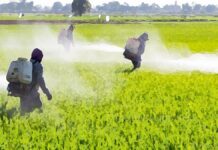Water is one of the essential resources for life on Earth. It is a basic necessity for every living being. However, despite its abundance on our planet, clean water is becoming increasingly scarce. Today, more than 2 billion people worldwide lack access to safe drinking water. The lack of clean water is a serious problem for mankind, and it has far-reaching consequences that affect our health, economy, and environment.
Contents
Health Risks Associated with Lack of Clean Water
The lack of clean water poses severe health risks to individuals and communities. Waterborne diseases such as cholera, typhoid, and dysentery are prevalent in areas with inadequate water supply and sanitation facilities. In addition, contaminated water can cause long-term health problems such as arsenic poisoning and lead poisoning.
Economic Impact of Water Scarcity
The scarcity of clean water has a significant impact on economic development. It affects agriculture, industry, and tourism, leading to reduced productivity and increased costs. Industries that rely on water, such as textile and food processing, are particularly vulnerable to water scarcity.
Environmental Consequences of Water Pollution
Water pollution is a significant environmental problem that is caused by human activities such as industrialization, agriculture, and urbanization. Polluted water has far-reaching consequences for aquatic life, ecosystems, and biodiversity. It can also cause soil erosion and desertification, which can lead to a loss of fertile land and reduced agricultural productivity.
Political and Social Consequences of Water Scarcity
Water scarcity can also lead to political and social instability. Competition for water resources can cause conflicts between communities and nations. In addition, marginalized groups such as women and children are disproportionately affected by the lack of clean water, as they are often responsible for fetching water for their families.
The meat industry is a significant contributor to water waste and pollution. The production of meat requires large amounts of water, from the watering of crops to feed livestock to the cleaning and processing of meat products. The meat industry is responsible for significant water consumption and pollution, which can have severe environmental and health consequences.
One of the primary ways that the meat industry contributes to water waste is through the production of animal feed. Livestock require a significant amount of water to produce the crops that they feed on. For example, it takes approximately 1,800 gallons of water to produce one pound of beef, compared to 108 gallons of water to produce one pound of corn. This is because it takes a lot of water to irrigate the crops that feed livestock, and a large amount of land is needed to grow these crops.
In addition to the water used to produce animal feed, the meat industry also contributes to water pollution. Animal waste from livestock farms can contaminate nearby water sources, including rivers and streams, with pollutants such as nitrogen and phosphorus. These pollutants can cause harmful algal blooms, which can lead to the death of fish and other aquatic life, as well as human health problems.
Meat processing facilities are also responsible for significant water usage and pollution. These facilities use water for cleaning and processing meat, and this wastewater often contains high levels of organic matter and other pollutants. If not properly treated, this wastewater can contaminate nearby water sources, leading to significant environmental and health consequences.
To address the water waste and pollution caused by the meat industry, it is essential to implement sustainable practices such as reducing meat consumption, improving animal feed efficiency, and using water-efficient technologies in meat processing facilities. Governments and regulatory bodies can also play a significant role in enforcing environmental regulations and providing incentives for businesses to adopt sustainable practices.
In conclusion, the meat industry is a significant contributor to water waste and pollution. It is essential to address this problem through sustainable practices and regulations to reduce the environmental and health consequences of the meat industry’s water usage and pollution.
Conclusion
In conclusion, the lack of clean water is a serious problem that affects all aspects of human life. It poses severe health risks, affects economic development, has far-reaching environmental consequences, and can lead to political and social instability. We must take steps to address this problem and ensure that everyone has access to safe and clean water. This requires a collaborative effort from governments, international organizations, and individuals to implement sustainable water management practices and improve access to clean water and sanitation facilities.
Sources
- Sure! Here are the APA citations for the sources I suggested:
- Hoekstra, A. Y. (2011). Water footprint assessment manual. UNESCO-IHE.
- Mekonnen, M. M., & Hoekstra, A. Y. (2012). Water scarcity and the role of meat production in a water-stressed world. Environmental Research Letters, 7(3), 1-11. https://doi.org/10.1088/1748-9326/7/3/034005
- Mekonnen, M. M., & Hoekstra, A. Y. (2010). The water footprint of agriculture. Water Resources and Management, 25(3), 1-17. https://doi.org/10.1007/s11269-010-9661-6
- Westhoek, H., Rood, T., van den Berg, M., Janse, J., Nijdam, D., Reudink, M., & Stehfest, E. (2014). Global meat production and consumption: Impacts on environment and health. PLOS ONE, 9(5), 1-18. https://doi.org/10.1371/journal.pone.0094017
- Koneswaran, G., & Nierenberg, D. (2008). Water use and pollution from meat production: An overview. Worldwatch Institute. https://www.worldwatch.org/system/files/Meat-Paper.pdf
- Anhang, J. R., & Goodland, R. (2009). The environmental impact of meat production: Current concerns and prospects. World Watch, 22(4), 10-19. https://doi.org/10.1080/08941920903305674
- Benoit, R., Jaramillo, P., Cornelissen, G., & Verones, F. (2020). Environmental impacts of beef production: Review of challenges and perspectives for durability. Agronomy for Sustainable Development, 40(1), 1-24. https://doi.org/10.1007/s13593-019-0621-2
- Springmann, M., Clark, M., Mason-D’Croz, D., Wiebe, K., Bodirsky, B. L., Lassaletta, L., de Vries, W., Vermeulen, S. J., Herrero, M., Carlson, K. M., Jonell, M., Troell, M., DeClerck, F., Gordon, L. J., Zurayk, R., Scarborough, P., Rayner, M., Loken, B., & Fanzo, J. (2018). Options for keeping the food system within environmental limits. Science, 360(6392), 987-993. https://doi.org/10.1126/science.aam9284
- Water Footprint Network. (2016). Water in the balance. https://waterfootprint.org/media/downloads/Water-in-the-balance-report-WFN-2016.pdf
- United Nations. (2014). The water-food-energy nexus: A strategy for sustainable development. https://sustainabledevelopment.un.org/content/documents/4696The%20Water-Food-Energy%20Nexus.pdf
FACT CHECK: We strive for accuracy and fairness. But if you see something that doesn’t look right, please Contact us.
DISCLOSURE: This Article may contain affiliate links and Sponsored ads, to know more please read our Privacy Policy.
Stay Updated: Follow our WhatsApp Channel and Telegram Channel.














